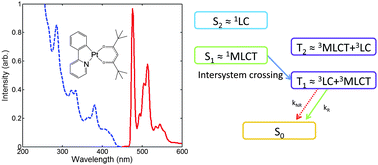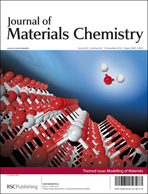Models of organometallic complexes for optoelectronic applications†
Abstract
Organometallic complexes have potential applications as the optically active components of organic light emitting diodes (OLEDs) and organic photovoltaics (OPV). Development of more effective complexes may be aided by understanding their excited state properties. Here we discuss two key theoretical approaches to investigate these complexes: first principles atomistic models and effective Hamiltonian models. We review applications of these methods, such as, determining the nature of the emitting state, predicting the fraction of injected charges that form triplet excitations, and explaining the sensitivity of device performance to small changes in the molecular structure of the organometallic complexes.

- This article is part of the themed collection: Modelling of Materials

 Please wait while we load your content...
Please wait while we load your content...